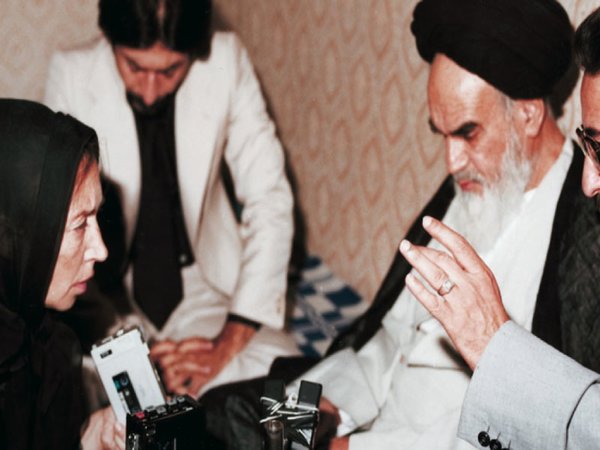Despite challenges throughout its existence from new technological innovations aimed at usurping its throne, the film industry has long proved almost bulletproof from competition due to its adaptability and clout in the entertainment marketplace.
When the introduction of TV threatened Hollywood’s rivers of celluloid gold, it fired back with colour film and a series of gimmicky add-ons such as Smell-O-Vision, all attempts to return dwindling audiences back to the cinemas. Because these offerings were unavailable in the early days of TV, the film industry was able to keep its head above water long enough to re-establish its dominance in entertainment.
With the 80s came VCRs. After failing to have the devices banned in court on grounds of copyright infringement, the film industry instead adopted home theatre as a secondary revenue stream and pioneered DVD technology in the 90s as its successor. Home cinema technology advanced rapidly, with consumer-grade devices now coming close to replicating the big screen experience.
Once again the film industry finds itself in the midst of entertainment battle with a relatively new enemy: the internet. Against the threat of online piracy, Hollywood is firing back with all guns blazing to once again make the cinema experience that will impress even the YouTube generation. IMAX, stereoscopic 3D, new motion capture technology and breakthroughs in CGI have all part and parcel of studio release schedules in the lead up to what the industry hopes will once again ensure that bums stay on cinema seats —James Cameron’s Avatar.
While most men would crumble, crash and burn at the thought of reviving the flat-lining $10 billion Hollywood beast, director James Cameron proves he is well and truly up to the task, delivering another career-defining film to his already illustrious career that stretches Hollywood’s creative glass ceiling into another world.
Part sci-fi, part adventure, part love story and part war film, Avatar tells the story of Pandora, a vibrant and exotic alien world on the brink of war. Taking place in the year 2154, humans mine Pandora for the aptly-titled Unobtanium, a rare mineral that sells on the industrial wasteland that is now Earth for $20 million a kilo. Despite never being told of the mineral’s importance, token evil corporation Resources Development Administration intends on mining the largest deposit of Unobtanium on Pandora, which just so happens to sit beneath the sacred home of the native population, a 3-meter tall cat-like species called the Na’vi.
Initially intent on finding a diplomatic solution, human controlled Avatars—Na’vi bodies controlled by human subjects—are sent into the world to learn from, and about, the Na’vi as the mechanized military forces led by Colonel Quaritch grow increasingly aggressive towards the indigenous population.
Hero Jake Sully, played by Australian actor Sam Worthington is the first non-scientist given an avatar body. As he explores an entirely new world in an entirely new way — literally a riff on the way the audience views the film — Jake falls deeper in love with both Pandora and it’s native people. An ex-Marine paraplegic confined to a wheelchair in his human life, Jake’s gradual emancipation from his fragile human body is uplifting and joyous to behold as he eventually becomes one with the tribe in opposition to the human exploitation of Pandora.
Subtle and believable, Worthington finally proves why he was hand-picked by Cameron to headline Avatar and inherit the keys to Hollywood, turning in a performance that stands out even amidst the visual grandiosity of his environment. The bipolar nature of Jake’s predicament is expertly handled by Worthington, allowing the audience to believe his motivations when he finally ‘goes native’ and turns against his ruthless employer.
Sigourney Weaver’s long-anticipated reunion with Cameron since her Oscar-nominated role in the Cameron-directed Aliens doesn’t disappoint either. Weaver plays Dr Grace Augustine, a conflicted scientist trying to reconcile the interests of two vastly different worlds.
The performances of the motion capture cast in particular are phenomenal, considering their work is entirely green-screened with no scenery to chew on. On the Na’vi front, Zoe Saldana’s performance shines through her CG exterior with such believability that her eventual love for Jake comes across as genuine and organic as if they were both simply human. Similarly, Worthington’s Na’vi scenes are just as credible as his human ones; a testament to the motion-capture technology. The chemistry between the two leads is central to the film’s appeal, evoking parallels to the style of romance Cameron employed so effectively in Titanic.
Avatar builds on thematic ideas already explored in Cameron’s career, most notably the triumph of nature and love over technology that lay at the core of his Terminator films. However this time around, Cameron explores the issue with a far more timely environmentalist agenda rather than his more traditional apocalyptic approach. The idea of a crippled and broken man finding his inner strength by reconnecting with nature milks the message further and works well in tandem with the beauty of the world to demonstrate what is at stake for the Na’vi. The messages are clear-cut yet never overbearing, making for a refreshing change of pace from the mindlessness is so many of this year’s blockbuster movies.
While a large portion of the first half of the film’s lengthy 161-minute running time is spent showing off Cameron’s world-building abilities at the expense of plot development, your attention to the film’s gorgeous Pandoran landscape will never wander. While traversing and exploring the world of Avatar, we don’t only finding ourselves identifying with Jack, but also developing a genuine emotional attachment to the interconnected world of Pandora, one which becomes essential in the films third-act payoff, both emotionally and allegorically.
From floating gravitationally-lifted mountains to the lush fluorescent jungle landscapes, Cameron and Peter Jackson’s digital effects studio WETA Digital have truly accomplished the impossible and crafted an entire world and ecosystem that is as believable as it is beautiful. The beauty of Pandora is central to the film’s environmental theme, and in that respect, Cameron has gone above and beyond any landscape ever before projected onto the silver screen.
On a purely technological level, Cameron is leaps and bounds ahead of the pack in both his ambition to use the technology to shoot live-action, and in the manner in which the technology is used to genuinely benefit the already masterful storytelling.
While the recent slate of 3D, motion-captured films have been in digitally animated and stylised worlds, Cameron’s expansion of this concept to hyper-realistic live-action worlds takes a huge leap to the next valley. Never for one moment does your brain decide ‘No, giant 12-foot cat-alien-smurfs do not exist’, which is the ultimate testament to the films technological superiority.
Cameron uses his new 3D and motion-capture toys to enhance the story by filming Avatar in much the same way us humans see in everyday life. Rather than using the 3D as a gimmick by launching all sorts of objects towards the audience, Cameron uses the tool to make Pandora much more realistic, after all, humans see in three dimensions. This use of 3D film to enforce enhanced depth perception is a new idea, yet seems completely obvious, and if Cameron is to be believed, will become the next major advancement in filmmaking.
Avatar is not however, the game-changer Hollywood is banking on it to be because not everyone can be James Cameron. If every director had the tools, guts, passion and skills to create not only a world with such scope, but also the technology to bring that world to life, then we would be seeing a true revolution in film. As it stands, Cameron is the only director with the vision and balls to not only pen one of the most ambitiously original stories ever put to film, but to develop the technology for it that will no doubt be put into popular use over the next decade, most conspicuously with Peter Jackson and Steven Spielberg’s Tin Tin trilogy.
But perhaps the beauty and wonder of Avatar lies in its role as the first ever live-action motion-capture 3D film, in much the same way Toy Story captured our hearts with its innovative digital animation that has now become a regular staple in studio’s release schedules. Perhaps one day every blockbuster film will take its cues from Avatar, but just like Toy Story, Avatar’s beauty goes much deeper than its technological shell.
If nothing else, Avatar is proof that Hollywood is not entirely bereft of original ideas, or of stumping the money to bring them to the screen. In a blockbuster world populated by run-of-the-mill remakes, reboots and adaptations, Avatar stands alone as not only the most original, but also the most expensive. Reported to have cost $300 million to make, Cameron and Fox Studios have made a big-time bet, and it’s undoubtedly paid off. Big time.
Michael Calle is recent La Trobe Bachelor of Journalism graduate who writes about film, music and pop culture. His previous contribution was a review of Zombieland. His blog is called TERMINALS.








